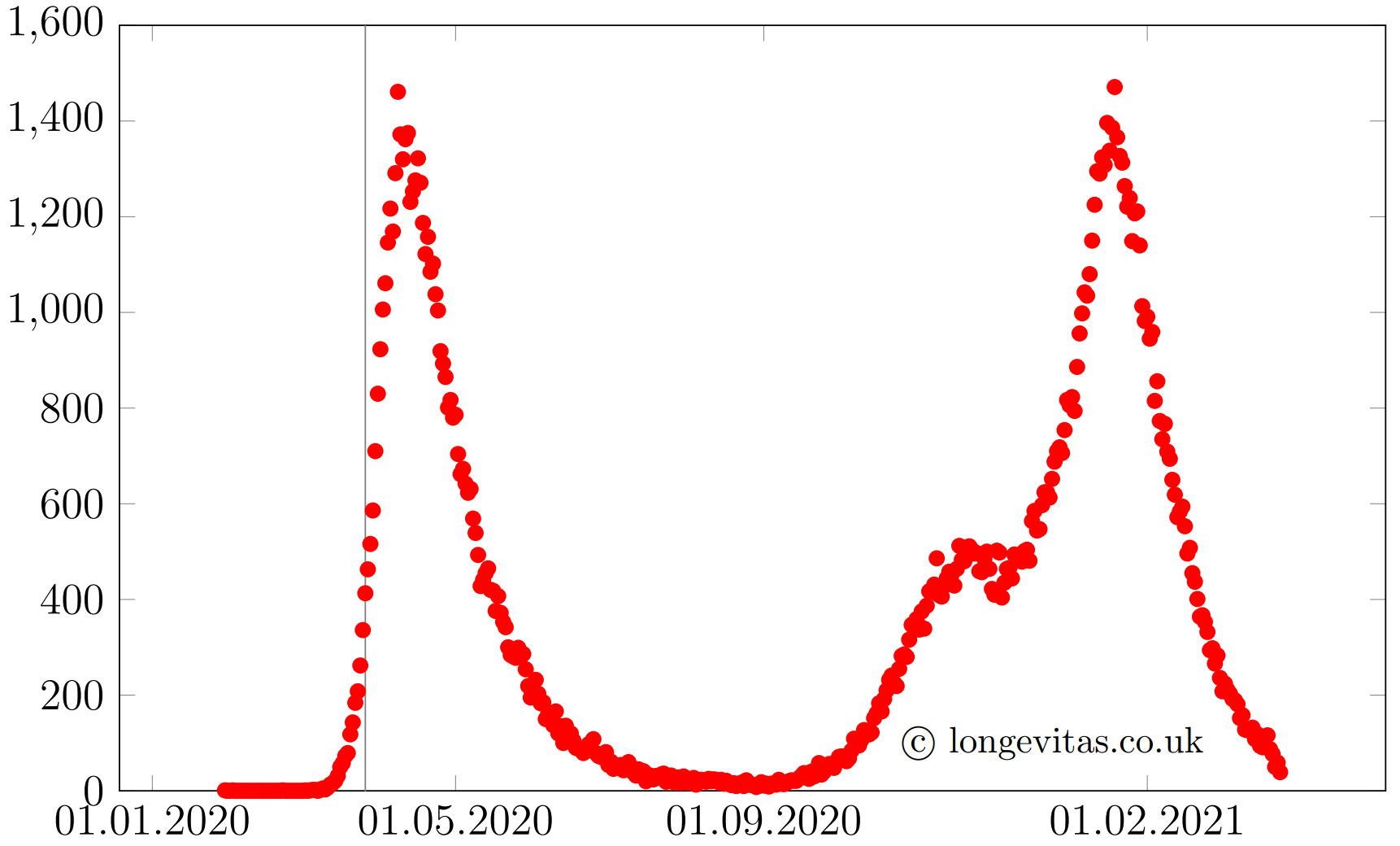A pandemic retrospective
The former UK prime minister Harold Wilson famously said that "a week is along time in politics". One wonders what he would have made of the coronavirus pandemic. Figure 1 shows the daily distribution of the more than 150,000 COVID-related deaths that have occurred in the UK since the start of 2020. In the first week of March 2020 there were just 6 deaths mentioning COVID-19 on the death certificate; in the last week of the same month there were 3,256.
Figure 1. Number of deaths in UK of people whose death certificate mentioned COVID-19 as one of the causes. Source: ONS. The vertical line shows 26th March 2020, the date that lockdown legally commenced in England.

The unfortunately historic nature of the COVID-19 pandemic is made plain in Figure 2. In 2020 there were over 600,000 deaths in England & Wales; the last time there were this many was in 1918.
Figure 2. Numbers of deaths in England & Wales (2020 count is provisional). Source: ONS.

The reason for the high number of deaths in 1918 is the same as in 2020 — a viral pandemic. In 2020 it was the novel SARS-CoV-2 virus; in 1918 it was influenza. The UK actually experienced three mortality spikes in 1918 and 1919, with the two largest occurring in late 1918 and early 1919. These latter two spikes were the most significant, and they are shown in Figure 3.
Figure 3. Weekly deaths in 1918–1919 as percentage of equivalent weeks in 1913–1917. Source: own calculations using data from Craufurd Dunlop and Watt (1915, 1916a, 1916b, 1918, 1919, 1920a, 1920b).

The 1918–1920 pandemic was different to the 2020 pandemic: a century ago influenza disproportionately killed those in their 20s and 30s, whereas COVID-19 mainly kills the elderly. However, the double spikes in Figures 1 and 3 are eerily similar. Of course, the current pandemic is not yet over, and only future history books will be able to properly compare the two. A future analysis will also determine the extent to which COVID-19 infection raises long-term mortality rates amongst survivors. Again, an uncomfortable possible precedent was set by the 1918-1920 influenza pandemic — mortality from cardiovascular disease rose strongly in the decades after 1920. Whether the epidemic of cardiovascular mortality was caused by the influenza pandemic of 1918–1920 is unknown. Only time will tell what COVID-19 infection does to the mortality of survivors.
References:
Craufurd Dunlop, J. C. and Watt, A.. Fifty-ninth annual report of the Registrar General for Scotland, 59. H.M. Stationery Office, Glasgow, 1915.
Craufurd Dunlop, J. C. and Watt, A. Sixtieth annual report of the Registrar General for Scotland, 60. H.M. Stationery Office, Glasgow, 1916a.
Craufurd Dunlop, J. C. and Watt, A. Sixty-first annual report of the Registrar General for Scotland, 61. H.M. Stationery Office, Glasgow, 1916b.
Craufurd Dunlop, J. C. and Watt, A. Sixty-second annual report of the Registrar General for Scotland, 62. H.M. Stationery Office, Edinburgh, 1918.
Craufurd Dunlop, J. C. and Watt, A. Sixty-third annual report of the Registrar General for Scotland, 63. H.M. Stationery Office, Edinburgh, 1919.
Craufurd Dunlop, J. C. and Watt, A. Sixty-fourth annual report of the Registrar General for Scotland, 64. H.M. Stationery Office, Edinburgh, 1920a.
Craufurd Dunlop, J. C. and Watt, A. Sixty-fifth annual report of the Registrar General for Scotland, 65. H.M. Stationery Office, Edinburgh, 1920b.
The Health Protection (Coronavirus, Restrictions) (England) Regulations 2020.


Add new comment